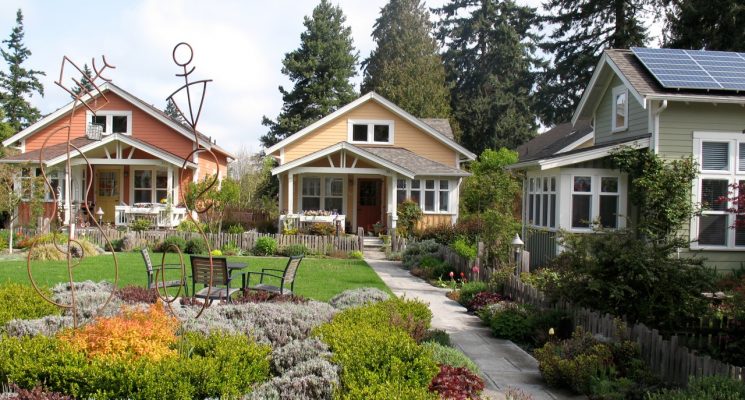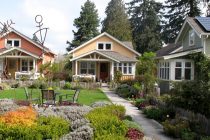Principles 2-4 of the Building Biology Principles concern Community Planning:
- Place dwellings so occupants are undisturbed by sources of man-made air, soil, water, noise and electro-pollution.
- Place dwellings in well-planned communities that provide ample access to fresh air, sunshine and nature.
- Plan homes and developments considering the needs of community, families and individuals of all ages.
You can download this fact sheet by clicking here.
How do we reconcile human health and ecological living in our cities today with the challenges of air, land and water pollution, the automobile, social problems, and zoning restrictions?
How do we define and create “well-planned” communities?
How can we meet the needs of community, families and individuals of all ages?
In Building Biology, we use nature as the gold standard. By this we mean that we try to emulate the conditions that exist in nature to enhance life. In nature the key to success is symbiosis whereby complex systems operate optimally together in a mutually beneficial relationship.
In this course we will explore current movements in city planning and the ways they represent Building Biology ideals.
By the 1980’s a new movement in urban design was brewing in reaction to urban deterioration and suburban sprawl. This movement looked to draw people back into the center of the city and reduce the dependency on automobiles and fossil fuels. At the same time, it was trying to re-introduce a sense of community into urban neighborhoods.
We will look at some of these contemporary city planning movements including New Urbanism, Cohousing, the Transition Movement, the Pocket Neighborhood, and Eco-hood. While each presents a unique perspective on the revitalization of our urban neighborhoods, similarities include creating diverse, self-sufficient neighborhoods which support a variety of activities, transportation modes, and inspire community participation.
Whereas the Garden City and Radiant city movements upon which early North American planning initiatives were based, the examples shown in this course are North American and reflect inspiring solutions that are uniquely applicable to our urban fabric
Each solution provides ample access to fresh air, sunshine and nature, by virtue of the implementation of good planning principles. Each also integrates well within the existing urban fabric. Although none to-date specifically addresses the larger Building Biology concerns of healthy natural building materials and freedom from electro-magnetic pollution, they do represent inspiring models where these aspects could be easily adopted by a forward thinking developer or collective of residents with a holistic Building Biology mindset.
Want to learn more on this issue? Click the comprehensive online course, here below.
References:
For more information on “ecological communities” please click here: Community (biology) Definition and Examples . Biology Articles, Tutorials & Dictionary Online.


